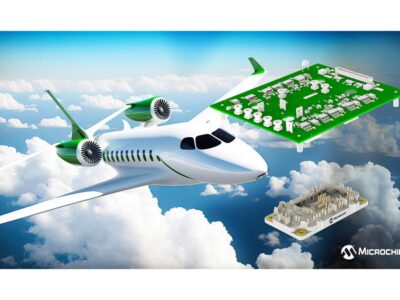
Fuel cell plane brings zero emission flying within reach
Being the first four-seat passenger plane relying primarily on a hydrogen fuel cell, the HY4 will take off to its maiden flight during the upcoming summer. The powertrain of this twin-fuselage, single-engine plane consists of a hydrogen storage unit, a low-temperature hydrogen fuel cell and a high-performance battery. The fuel cell converts the hydrogen energy directly into electric energy, powering the propeller. The only by-product in this process is pure water. If the hydrogen needed for the conversion process is generated in an electrolysis process powered through renewables, the HY4 flies completely emission-free.
The HY4 powertrain has already been tested successfully in the lab. To create enough lift to take off, the system must provide the maximum takeoff performance reliably for at least three minutes. During the test, the developers already succeeded in running the system for more than ten minutes at maximum power. The interplay between fuel cell and the battery, which unites the functions of an energy buffer and back-up power system, has also been proved. This paves the way to integrate the powertrain into the plane.
Implementing the hybrid drive concept of the HY4 research platform is regarded as an important milestone on the way to establish electric drives in commercial passenger airplanes. “Hybrid drives promise high energy efficiency at low local emissions. We think that they son will have the potential to safely carry passengers over short distances,” comments DLR aeronautics board member Rolf Henke. “In the long term, aircraft with higher capacities are perceivable.”
“Electric passenger planes could provide the missing link to implement dynamic, emission-free, connected mobility concepts of tomorrow”, says André Tess who leads the DLR’s Institute of Technical Thermodynamics. Such a concept could at the same time generate beneficial synergy effects between air-bound and ground electromobility, he added. Such an efficient, emission-free and connected means of transportation will fill the mobility demand in future megacities and urban conglomerations.
Against this background the European Union has defined the goal to facilitate the travel between its member states and at the same time to bring it online and speed it up. For instance, the EU research network ACARE (Advisory Council for Aviation Research and Innovation in Europe) aims at reducing the travel time from door to door within the member states to four hours. This in turn would require a seamless interplay of all means of traffic involved.
In the project HY4, a number of companies and other entities are collaborating. For instance, DLR spin-off H2FLY is responsible for operation the plane. The design of the HY4 is derived from an existing concept from Slovenian airplane manufacturer Pipistrel, the powertrain concept and the power modules have been developed by the University of Ulm, whereas Canadian hydrogen expert Hydrogenics contributed the fuel cell stack. In addition, the airport of Stuttgart is supporting the project – the airport is the home base of the HY4.
 If you enjoyed this article, you will like the following ones: don't miss them by subscribing to :
eeNews on Google News
If you enjoyed this article, you will like the following ones: don't miss them by subscribing to :
eeNews on Google News


